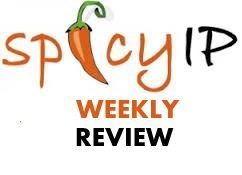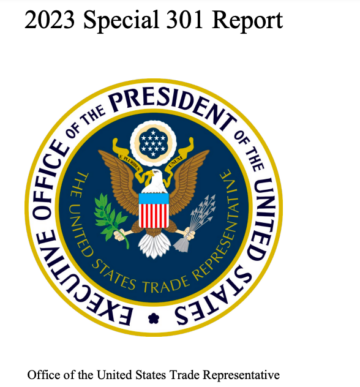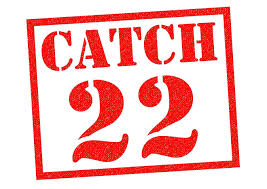
[This guest post is authored by our former blogger Varsha Jhavar and Surbhi Nautiyal. Varsha is a lawyer based in Delhi and is a graduate of Hidayatullah National Law University, Raipur. Surbhi is a lawyer based in Delhi and is a graduate of RGSOIPL, IIT Kharagpur. The views expressed here are those of the authors’ alone.]
At the Delhi High Court’s (DHC) bidding, major developments have taken place in the rare diseases space in India. These include the introduction of the National Policy on Rare Diseases, 2021 (Policy), National Consortium for Research and Development on therapeutics for Rare Diseases (National Consortium), constitution of the National Rare Diseases Committee (Committee) and launch of a digital portal for crowdfunding and voluntary donations for the treatment of patients with rare diseases. The National Consortium had in fact invited proposals for ‘Therapeutics for Inherited Rare Diseases’ and upon review, approved certain proposals in April 2023. The Committee was constituted by the DHC in May, 2023. This issue is important as India has about 100 million people suffering from rare diseases.
Readers can refer to Swaraj’s post for a detailed analysis of the DHC’s initial, (March 23, 2021) order for a background. In this 2-part post we will discuss the consequent Policy, and examine its implementation and shortcomings in Part 1 and Part 2 of the post will focus on the possible consequences of introducing a legislation for the development of drugs for rare diseases.
A Definition for ‘Rare Diseases’
The revised Policy underscores the importance of formulating a definition for ‘rare diseases’. The Policy notes that most definitions adopted by various countries focus on the prevalence threshold, while some other countries also look at factors such as location, levels of rarity and study-ability of rare diseases. It is stated that further research is required for examining current definitions and formulating one for India, and shall be done as soon as ‘sufficient data’ is available. Not even a rough estimate has been provided, in the Policy, of the number of people that are suffering from rare diseases in India. However, it is indicated in the Policy that steps have been taken for the creation of a hospital-based National Registry for Rare Diseases (Registry), by the Indian Council of Medical Research (ICMR), for the collection of the necessary data. As per the response to a query in this regard before the Lok Sabha, data of a total of 4,001 rare diseases seems to have been recorded by ICMR till 31st October 2021. Also, about 10,000 cases of rare diseases have been recorded by the Registry.
Interestingly, the New Drugs and Clinical Trials Rules, 2019 (Rules), defines an ‘orphan drug’ as a drug intended to treat a condition which affects not more than five lakh persons in India. However, this definition does not find a mention in the Policy. Pertinently, the definition relates to a ‘drug’ for the treatment of rare diseases, however, the Rules do not specify what qualifies as a rare disease. Considering that Rules are enforceable and a Policy is not, effectively (at least for the time being), the Rules provide the only parameter for identification/designation (so to speak) as a rare disease in India, but only for the ones for which drugs are being/have been developed.
Categorization of Rare Diseases
Under the Policy, rare diseases have been categorized into 3 groups – Group 1: “(d)isorders amenable to one-time curative treatment”; Group 2: “(d)iseases requiring long term/lifelong treatment having a relatively lower cost of treatment and benefit has been documented in literature and annual or more frequent surveillance is required”; & Group 3: “(d)iseases for which definitive treatment is available but challenges are to make optimal patient selection for benefit, very high cost and lifelong therapy”. However, very few diseases have been identified (less than 100), in contrast to the number of 7000-8000 rare diseases mentioned in the Policy. It is stated that the list is not exhaustive and will be revised periodically. In 2023, 6 rare diseases were added to the list. Well, wouldn’t it make more sense for diseases/conditions recognised by the WHO as rare diseases to be included in India’s list of rare diseases?
Commitment to Provide Financial Assistance Under the Policy
Access to essential treatment is an indispensable part of the right to health falling within the broader ambit of Article 21. This sentiment is reflected in various judgements of the Supreme Court and High Courts. Indicatively, in Paschim Banga Khet v. State of West Bengal, the Supreme Court noted the ‘constitutional obligation of the State to provide adequate medical services to the people’. In Manoj M. v. State of Kerala, despite the State Government’s plea about limited financial resources of the country, the Kerala High Court held that the State is constitutionally obliged to make adequate provisions for people. A single judge of DHC in Mohd. Ahmed (Minor) v. Union of India has also observed that the ‘core obligations under the right to health are non-derogable’. The Madhya Pradesh High Court has also recognised the Government’s obligation under Article 21 in State of Madhya Pradesh v. Prajwal Shrikhande.
The medicines and therapies for rare diseases are exorbitantly expensive and this fact hits harder looking at the scarcity of financial resources in the country. The Policy highlights that considering these constraints, policymakers have to prioritize interventions that address the ailments of a larger population with a relatively smaller amount over interventions that require greater resources for a smaller number of individuals. Admittedly, the situation is not easy for the government, but it shouldn’t have to be an either-or situation.
Initially, the Policy provided financial support of up to INR 20 lakhs to patients with Group 1 diseases under the Rashtriya Arogya Nidhi (RAN) Scheme. In 2022, the financial support clause was amended to include patients from ‘any category of the Rare Diseases’ and the amount was increased to INR 50 lakhs. The amended clause also clarified that “financial support will be provided to the patients for treatment in any of the Centre (s) of Excellence mentioned in the NPRD 2021, outside the umbrella RAN scheme.” (However, till the procedure to implement the amendments are finalized, funds will continue to come from the RAN scheme.)
The enforceability of this obligation to provide financial assistance can be seen in the DHC’s order in Aadhyan Jaiswal v. Union of India where while hearing a bunch of petitions relating to children suffering from rare diseases, interim directions were issued for the commencement of treatment of the petitioners.
Need for Better Centre-State Coordination
The Policy notes that the 2017 National Policy for Treatment for Rare Diseases faced implementational issues in bringing States on board. However, not much has improved on this front. Health is a subject under the State List and the overall tone of the Policy appears to be that supporting patients with rare diseases is primarily the States’ responsibility, while the Centre has a supporting role.
In the Policy, the Central Government had initially left the States to fend for themselves when it comes to supporting patients of rare diseases belonging to Group 2, by suggesting “State Governments can consider supporting patients” under this Group/category. Even post-amendment (where financial assistance has been provided for all categories of rare diseases), there is no clear demarcation/system for funding to Centres of Excellence for patients that require assistance beyond the maximum 50 lakh limit.
Centres of Excellence
The Policy had originally notified 8 institutes as Centres of Excellence (CoEs) for rare diseases which were explained as “premier Government tertiary hospitals with facilities for diagnosis, prevention and treatment of rare diseases.” These CoEs were also responsible for education and training for rare diseases and developing Standard Operating Procedures for various levels of care. Since its introduction, 3 more institutes have been notified. For the time being the CoEs are present in 10 States/UTs (2 are in Delhi) without any nexus, as rare diseases are neither just prevalent in these 10 States/UTs, nor are they evenly distributed across India.
The DHC noted that the CoEs are not centrally coordinated, leading to a lack of timely availability of adequate therapies. Improving the capacity at existing centres is probably a more practical as well as useful idea than making centres everywhere but without any actual ‘excellence’ in them.
Crowdfunding Portal
A crowdfunding portal has been introduced under the Policy, due to the high cost of treatments for rare diseases and the shortage of funds. The donations raised so far are only to the tune of INR 2.5 lakhs. In this regard, the DHC had also directed that the PSUs and corporate entities be informed about the crowdfunding platform in order to attract funding and pursuant to this, the Ministry of Health and Family Welfare(MoHFW) had taken steps to publicize the same. The government probably spent more on advertising the platform than the INR 2.5lakhs raised!
Having crowd-funding as an official national policy seems absurd, as it’s one thing for patients to do it individually, or for NGOs to do it. But it’s not at all a sustainable government policy! Especially since financing ‘patient costs’ does not stop the costs, they just continue. Innovation and capacity building for innovation, might be a more sustainable long-term solution. Crowd-funding is neither a short-term solution, nor a long-term solution. If the government was serious about supporting patient costs, they could consider increasing the healthcare budget, which in FY23 was a mere 2.1% of the GDP. It still wouldn’t be enough, but it would be a better, more dependable model than crowd-funding.
About the Rare Diseases Committee
The Committee consists of representatives from AIIMS-Delhi, ICMR and MoHW. Further, the Committee while working within the confines of the Policy is also directed to periodically review it and recommend changes to the MoHW. The Committee was introduced in order to ensure optimal coordination between the medical community, therapy providers and governmental agencies, and effective implementation of the Policy. In the Committee’s first meeting, fixed by the DHC, the Committee framed certain short-term goals, mid-term goals and long-term goals.
Status of Action Items provided under the Policy
The Policy has also enumerated certain actions that shall be focused on by the Government. Some of these have been acted upon to a certain extent, such as ICMR Registry, providing financial assistance, notifying of CoEs, crowdfunding platform, promotion of research & development of diagnostic and therapeutic modalities.
One of the other action items was the reduction in customs duties on the import of medicines for rare diseases. Previously, Zolgensma, a drug for spinal muscular dystrophy had an added tax of INR 6 cr over its already exorbitant cost of INR 16 cr and in 2021, the Ministry of Finance gave a waiver of customs duty for drugs imported for personal use for treatment of Spinal Muscular Atrophy. Exemption has also been given from Basic Customs Duty for certain drugs/medicines for rare diseases when imported by CoEs or on their recommendation. However, the tax exemptions are limited to medicines being imported for personal use or by CoEs. Pertinently, the tax waivers are not available for locally approved and available medicines in India, or when pharma companies import the medicines and sell/provide them i.e., it is restricted to drugs imported for personal use and COEs. In fact, the issue was also flagged before the DHC stating that if the waiver/tax exemption is granted, prices of the medicines will considerably reduce. The status of the implementation of some of the other suggestions is unclear.
The Policy refers to the encouragement of “local development and manufacture of drugs for rare diseases by public and private sector pharmaceutical companies” along with the introduction of legal/legislative measures in this regard. While this is a welcome thought, it is nothing more than wishful thinking, as implementation timelines and methodology of implementing this strategy have not been included within the purview of the Policy.
It is surprising to note that the Policy makes no mention/suggestion for the introduction of a statute/legislation for rare diseases, despite noting the existence of the Orphan Drugs Act, 1983 in the US. Under the Orphan Drugs Act, 1983, the development of orphan drugs is incentivised by granting drugs designated as orphan drugs market exclusivity for 7 yrs post-grant of marketing approval. The Act also provides for a 50% tax credit on the cost of clinical trials undertaken in the US. Even in the EU, there is a separate regulation covering orphan drugs and entities sponsoring such drugs are given incentives such as fee waivers for the regulatory procedures and a 10-year market exclusivity.
In Part II, the authors explore the possible consequences of the introduction of legislation for encouraging the development of drugs for rare diseases. Additionally, they provide suggestions for increasing the availability of drugs/therapies for rare diseases in India, inter alia by developing them indigenously.
The authors would like to thank Swaraj and Praharsh for their comments and input.
- SEO Powered Content & PR Distribution. Get Amplified Today.
- PlatoData.Network Vertical Generative Ai. Empower Yourself. Access Here.
- PlatoAiStream. Web3 Intelligence. Knowledge Amplified. Access Here.
- PlatoESG. Automotive / EVs, Carbon, CleanTech, Energy, Environment, Solar, Waste Management. Access Here.
- PlatoHealth. Biotech and Clinical Trials Intelligence. Access Here.
- ChartPrime. Elevate your Trading Game with ChartPrime. Access Here.
- BlockOffsets. Modernizing Environmental Offset Ownership. Access Here.
- Source: https://spicyip.com/2023/08/toothless-national-policy-on-rare-diseases-part-i.html
- :has
- :is
- :not
- :where
- $UP
- 000
- 1
- 10
- 100
- 16
- 20
- 2021
- 2022
- 2023
- 23
- 50
- 7
- 8
- a
- About
- across
- Act
- Action
- actions
- actual
- Additionally
- address
- adopted
- Advertising
- affects
- agencies
- ahmed
- All
- alone
- along
- already
- also
- amendments
- amount
- an
- analysis
- and
- annual
- any
- approval
- approved
- April
- ARE
- article
- AS
- Assistance
- At
- attract
- authored
- authors
- availability
- available
- background
- based
- basic
- BE
- been
- before
- being
- benefit
- Better
- between
- Beyond
- board
- Bringing
- broader
- budget
- Building
- Bunch
- but
- by
- CAN
- Capacity
- care
- cases
- categories
- Category
- central
- centre
- centres
- certain
- challenges
- Changes
- Children
- clarified
- clear
- Clinical
- clinical trials
- Cms
- collection
- come
- comes
- comments
- committee
- community
- Companies
- condition
- Consequences
- Consider
- considerably
- considering
- consists
- consortium
- constraints
- continue
- contrast
- coordinated
- coordination
- Corporate
- Cost
- Costs
- could
- Council
- countries
- country
- Court
- Courts
- covering
- creation
- credit
- Crowdfunding
- Current
- customs
- data
- Defines
- definition
- definitions
- definitive
- Delhi
- dependable
- designated
- Despite
- detailed
- developed
- developing
- Development
- developments
- diagnosis
- digital
- discuss
- Disease
- diseases
- distributed
- do
- documented
- does
- donations
- done
- drug
- Drugs
- due
- e
- easy
- Education
- Effective
- effectively
- encouraging
- enforceable
- enough
- ensure
- entities
- especially
- essential
- estimate
- Ether (ETH)
- EU
- Europa
- Even
- evenly
- examine
- Examining
- Excellence
- exclusivity
- existence
- existing
- expensive
- explained
- explore
- expressed
- extent
- faced
- facilities
- fact
- factors
- Falling
- family
- far
- fee
- few
- finalized
- finance
- financial
- financing
- Find
- First
- five
- fixed
- flagged
- Focus
- focused
- For
- Former
- formulating
- frequent
- from
- front
- funding
- funds
- further
- gave
- GDP
- given
- Goals
- Government
- governmental
- governmental agencies
- Governments
- graduate
- granted
- granting
- greater
- Group
- Group’s
- Guest
- Guest Post
- had
- harder
- Have
- having
- Health
- healthcare
- hearing
- Held
- here
- High
- highlights
- Hits
- hospitals
- However
- HTML
- HTTPS
- i
- idea
- identified
- if
- image
- implement
- implementation
- implementing
- import
- importance
- important
- improved
- improving
- in
- Incentives
- include
- included
- increased
- increasing
- india
- Indian
- indicated
- Individually
- individuals
- informed
- initial
- initially
- Innovation
- input
- intended
- interventions
- into
- introduced
- introducing
- Introduction
- issue
- Issued
- issues
- IT
- items
- ITS
- jpg
- judge
- just
- Lack
- larger
- Law
- lawyer
- leading
- least
- left
- Legislation
- less
- levels
- like
- LIMIT
- Limited
- List
- literature
- locally
- location
- Long
- long-term
- Look
- looking
- lower
- major
- make
- MAKES
- Making
- March
- Market
- Marketing
- max-width
- maximum
- May..
- measures
- medical
- medical research
- meeting
- mention
- mentioned
- mere
- Methodology
- might
- ministry
- minor
- modalities
- model
- more
- most
- much
- National
- necessary
- Neither
- nexus
- NGOs
- no
- nor
- note
- noted
- Notes
- nothing
- notifying
- noting
- number
- obligation
- obligations
- obliged
- observed
- october
- of
- official
- on
- ONE
- ones
- only
- operating
- optimal
- or
- order
- originally
- Other
- our
- outside
- over
- overall
- parameter
- part
- patient
- patients
- People
- per
- personal
- persons
- Pharma
- Pharmaceutical
- Place
- platform
- plato
- Plato Data Intelligence
- PlatoData
- policy
- policymakers
- population
- Portal
- possible
- Post
- powers
- Practical
- present
- prevalent
- Prevention
- previously
- Prices
- primarily
- Prioritize
- private
- private sector
- probably
- procedure
- procedures
- promotion
- Proposals
- provide
- provided
- providers
- provides
- providing
- public
- Pursuant
- quote
- raised
- RARE
- rarity
- recognised
- recommend
- Recommendation
- recorded
- reduce
- reduction
- refers
- reflected
- regard
- registry
- regulatory
- relatively
- Representatives
- require
- required
- research
- research and development
- Resources
- responsibility
- responsible
- restricted
- review
- right
- Role
- rules
- s
- same
- Scarcity
- scheme
- sector
- seems
- seen
- selection
- sense
- sentiment
- separate
- serious
- Services
- short-term
- shortage
- shortcomings
- since
- single
- situation
- smaller
- So
- so Far
- solution
- some
- Soon
- Space
- speak
- spent
- sponsoring
- standard
- State
- stated
- States
- stating
- Status
- Steps
- Still
- Stop
- Strategy
- subject
- such
- suffering
- Super
- support
- Supporting
- Supreme
- Supreme Court
- surprising
- surveillance
- sustainable
- taken
- tax
- tax credit
- tertiary
- than
- thank
- that
- The
- The State
- their
- Them
- themselves
- Therapeutic
- therapeutics
- therapies
- therapy
- There.
- These
- they
- thing
- Thinking
- this
- those
- thought
- threshold
- till
- time
- timelines
- to
- TONE
- Total
- Training
- treat
- treatment
- treatments
- trials
- umbrella
- under
- underscores
- union
- university
- upon
- us
- use
- various
- very
- views
- voluntary
- was
- we
- welcome
- WELL
- were
- West
- What
- when
- which
- while
- WHO
- will
- with
- within
- without
- working
- would
- zephyrnet











